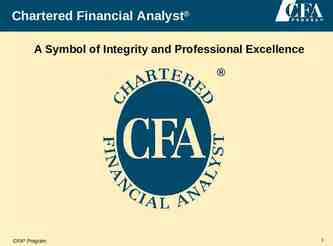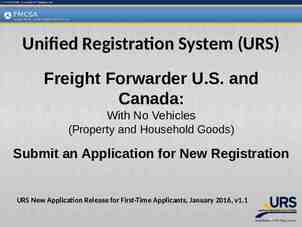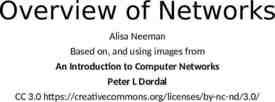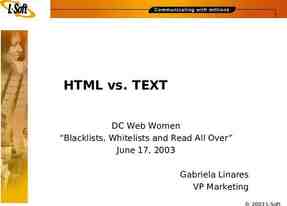Creating Effective Coordinated Services Plans
45 Slides1.13 MB

Creating Effective Coordinated Services Plans A Practice-Based Workshop to Build Competence and Confidence in Coordinated Services Planning LIT Training 7/19/17

Agenda Introductions and overview Review the principles of our System of Care Review the w/h questions of Coordinated Service Planning (CSP) Tips for identifying the lead Agency Considerations for preparing families for the CSP Meeting Identifying team member roles Suggestions for best practice Practice CSP

Coordinated Services Planning Brief History Act 264, passed in 1988, provides guidelines for human services and public education to work together to involve families in effort to coordinate services to strengthen outcomes for children and families. This Act developed efforts to coordinate care for children and adolescents with a severe emotional disturbance and ensure appropriate educational, mental health, child welfare, juvenile justice, residential and other treatment services in accordance with an individual plan. In 2005 in an agreement between AOE/AHS, the Act was expanded to include children and adolescents with disabilities who are eligible for both special education and disability related services.

Coordinated Services Planning and Our System of Care CSP is part of the Vermont System of Care for children with complex needs and their families. Some key components of our System of Care related to CSP planning include: Interagency child and family planning teams Coordinated services planning teams Local interagency teams State interagency team Act 264 advisory board

Coordinated Services Planning and our System of Care The System of Care (SOC) is based on guiding principles that are the foundation of our work. Activity # 1: Please review the SOC Guiding Principles. Discuss the kinds of things you do with teams or community partners currently that demonstrate effort toward achieving these principles. Discuss and identify challenges in implementing these principles and proposed recommendations to address challenges. Identify reporter and note taker for brief report out to larger group. To learn more about our SOC including the vision and mission please visit http://www.state.vt.us/dmb

The What, Why, Who and How of CSPs

The What? A CSP is a process that follows a series of steps to help children and families identify goals. It helps to create a plan that represents a holistic view of a child and family. It is considered an addendum to an existing treatment plan and combines the IEP, the child’s mental health treatment plan, and other individual supportive plans.

The Why? It creates the opportunity for representatives from different agencies or from the community to plan together to address unmet needs. It maximizes parent involvement and is a process that families are entitled to. It helps to ensure that all components of treatment are working toward similar goals, that progress is monitored, and that resources are identified and used effectively. It is family friendly and strengths based. It is necessary if residential or high-end wraparound is a consideration.

The Who? Child/Family Child/Family natural supports and advocacy (encourage families to bring friends, family, or other supports) Mental Health Child and Family Services (DCF is not required to attend if youth is not in custody however, is willing to participate at the request of the team) Education Health/medical Adoption related supports/services IDDS-Intellectual and Developmental Disabilities Vocational Rehabilitation Early childhood Other

The How? Prior to the meeting Identify the lead Agency. Follow the CSP Checklist for guidelines to help you prepare for a CSP. Plan schedule ahead to be there the full length of the meeting. Review CSP forms with family, obtain signatures on release form and permission form. Plan when and where you are going to meet. Contact other participants. Review with family members what will be discussed at the meeting. Help family determine their goals for the meeting. Decide who will facilitate the meeting. Discuss possible team norms for meeting. Work closely with a parent representative. .

The How? Continued At the meeting Complete release forms/permission forms if not done prior to the meeting. Identify time keeper and other team member roles. Encourage creative thinking. Make sure everyone is heard, build connections to encourage participation. Ensure that families and caregivers have a voice. Create an environment for team members to feel supported in sharing ideas and asking questions. Create clear next steps. Schedule a follow up meeting. Be prepared to complete the plan so that team members can take it with them. If a child’s personal Treatment Team is unable to agree upon or implement a CSP to meet the needs of the individual and his/her family they can seek technical assistance from the Local Interagency Team (LIT).

Tips For Identifying The Lead Agency

The Lead Agency Under Act 264, lead agency is: Family Services for all youth in state custody. Education for youth not in state custody and who primarily have difficulties in the educational domain. Mental Health for all other youth. Under AOE/AHS agreement, lead agency is: One of the agencies listed above, or The agency that has the closest relationship with the child/family.

Lead Agency Schedules the meeting. Facilitates the meeting. Ensures the meeting happens. Seeks support from team members for note taking and time keeping. Supports team to discuss and clarify roles and responsibilities of participants. Schedules planned follow up.

Considerations for Preparing Families

CSP Checklist Questions CSP CHECKLIST: PLEASE COMPLETE PRIOR TO MEETING Have parents been informed of the purpose of the meeting PRIOR to the meeting date? Yes Have parents signed the consent forms PRIOR to the meeting date? Yes No Have parents been given contact info for Parent Rep PRIOR to the meeting date? Yes No No (Parents should be advised that Parent Rep services are available to the family AT NO CHARGE) Have parents been advised that they can bring support persons to the meeting? Yes No Has there been consideration for the youth or child voice to be heard? Yes No (Input from child prior to meeting, parent permission for child to attend meeting, child interested in attending meeting, and if appropriate, invited) Expected to attend? Yes No Name of Lead Agency identified and point person. (If DCF custody, DCF may be the lead, if no Mental Health or DCF involvement school may be the lead, if Mental Health involvement, Mental Health representative may be the lead) What teams are currently in place? (IEP, 504, treatment team, other) Has the team met previously and what interventions have been tried? (Make sure page on previous, current and proposed services is complete) Have you identified all providers who should be invited to the meeting? Yes No Has every effort been made to schedule meeting within 2 weeks of request/consent? Yes No

CSP Checklist Questions AFTER THE MEETING: Are ALL sections of the CSP packet complete? Yes No Have the parents received a copy of the plan before leaving the meeting? Yes Has a follow-up meeting been scheduled? Yes No No (Remember a CSP is an active plan and needs to be reviewed and updated) OTHER CONSIDERATIONS: Who can ask for a CSP Meeting? Any team member Who MUST be at the meeting? Parents, DCF (if involved), Mental Health, and school. Who can be at the meeting? (Caregivers, foster parents, private therapists, GAL, Voc. Rehab, Economic Services, family, friends, pediatricians, etc.) Mental Health even if the child/family are not involved with NKHS, it is important that they be involved; they may have support services to offer and should a case ultimately be considered for assessment or residential placement it must be open to the designated mental health agency. Contact person: Vicky Whitehill, Senior Director, CYFS Support and Stabilization Department. DCF Family Services Family Services must be involved as the guardian if a child is in custody; if a child is not in custody, Family Services may be able to offer supports such as Family Safety Planning or in-home parent supports. Contact person: Emily Carrier, District Director St. Johnsbury; Patrick Ryan District Director Newport.

Suggestions for Best Practice

Best Practices for Successful CSP Planning Family members have the opportunity to speak first. Everyone has a chance to speak. Participants are listened to and treated with respect. Team members agree to give this meeting their undivided attention. Follow rules of brainstorming - no idea is a bad idea!

Best Practices Continued Remind participants that confidentiality will be maintained. Assign team roles. Use language that is free of jargon. Summarize decisions and next steps. Consider all ideas. Discussion of payment/responsibility is addressed outside of the meeting .

Practice Activities

Coordinated Services Planning - Practice Activity #2: Review following scenario: The school Guidance Counselor receives a phone call from a mother of a student requesting a Coordinated Service Plan meeting due to her son’s ongoing and frequent behavioral outbursts which have led to multiple school interventions and suspensions. The mother reports that she has tried multiple strategies that the Home School Coordinator and Behavioral Interventionist have recommended but nothing is working. DCF/Family Services has become involved due to her son’s “unmanageable behaviors”. The School Guidance Counselor calls Family Services and their local community Mental Health provider and requests them to come to a CSP meeting that includes the Behavior Interventionist, Home School Coordinator and the Para-educator. In small groups discuss who the lead agency should be and be prepared to share briefly with the group how you arrived at your decision.

Coordinated Services Planning - Practice Activity #3 Read following scenario: A 55 year old Grandfather and Grandmother have had guardianship of their grandson for the last five years. The grandson is 13 years old, on an IEP for Emotional Disturbance, is failing most of his classes, has few friends, and is emotionally behind his peers. The Grandson is regularly truant from school and acts out aggressively at school and at home. On numerous occasions he has been leaving home without parental permission and not returning until late or not at all. Before the order of Guardianship was made to the grandparents, the grandson experienced neglect while living as a young child with his birth family. This was largely due to the parents ongoing struggle with substances. While attending school, the grandson has required multiple school staff to help manage his day including the school Principal, Guidance Counselor, Home School Coordinator, and Therapist. School personnel have been working closely with the family to try to mange and improve the grandson’s behaviors. Despite a referral made to the Resource Team for IFBS services, the grandparents continue to report being afraid of their grandson and state they can’t manage his behaviors. The school staff has made several DCF reports that eventually lead to the child being ordered into States Custody.

Activity #3 Continued Select a Partner. Determine lead agency. Decide who to invite to your meeting. Review CSP Checklist. Practice identifying with family member what will be discussed at CSP and what their goals are.

QUIZ!

True or False? The parent of a child with a complex disability is responsible for finding the agency who will take the lead if no agency steps forward.

False! The parent/guardian can ask anyone from a school or agency that is working with their child to help them start the process. The individual will help the parent navigate the system until a lead agency is established.

True or False? The lead agency cannot schedule a CSP meeting in the absence of parent, surrogate parent, and/or guardian permission.

True While anyone can request that a CSP be developed, this can only happen with written permission of the parent, guardian, or surrogate parent. Further, the planning meeting can only occur if the parent/guardian is present.

True or False? The lead agency schedules the meeting, writes the Coordinated Services Plan, and implements and provides the resources and services identified in the CSP.

False! The lead agency makes sure that the meeting is scheduled and takes place and that team members follow up on the plan. Other members of the team may perform some of these tasks. Resources to implement the plan are addressed by the team and are not the assumed responsibility of the lead agency.

True or False? The lead agency contact does not need to be the same person as the primary or lead family contact in the CSP process.

True! While a public school or agency may be the lead entity responsible under the law and is required to ensure that the process occurs, it often makes sense for an individual that is closely connected to the family to take on some of the planning responsibilities.

True or False? Children on Individualized Education Plans (IEPs) do not need to have a CSP.

True! A CSP is only required if requested. Permission must be granted by the parent, guardian, and surrogate parent. Educators must inform a family of their entitlement to a CSP if the child is on an IEP for severe emotional disorder. However, it is not required that a CSP be developed.

Introducing The Coordinated Services Plan Form!

A. What are the Hopes and Goals for this Child/Youth? What is the family story? Where do they want the child to be as a result of this process? goal: the result or achievement toward which effort is directed. Family speaks first. Be realistic. Consider whether to focus on long or short term goals. Specify behavior or action, not service.

B. What are the strengths, resources, and natural supports that can help realize the hopes and goals? What does the child/youth like to do? What is child/youth good at? Who does child/youth connect with? Who has been helpful to the family? What’s happening when things are okay? Acknowledge the family for being a major source of strength around meeting child’s needs.

C. What are the needs, challenges, concerns, and priorities that must be considered? What are the family’s biggest worries/greatest fears? What are team member’s biggest worries/greatest fears? What’s most important to address first?

D. What are the current supports and services that help realize those hopes and goals? Make sure that the services/supports listed match the stated goals. Remember to include natural supports! Keep the list clear and concise.

E. What is the proposed plan of supports/services? Consider how these address needs identified earlier in the plan. Be specific - who, what, when. Remember to consider other family members’ needs as essential to the child’s well-being.

Developing the Coordinated Services Plan Activity #4: Utilizing scenario from previous activity: Small group task: From your list of potential CSP participants, choose a role for each person in your group. Assign a facilitator, recorder, time-keeper and additional team roles such as: A parent who strongly advocates for the child; a MH representative who has a strong trauma informed background; a Parent Rep who has had years of experience in working with people who struggle with mental health issues; a DCF supervisor who is unfamiliar with the child or team concerns; School staff who supports the child on a daily bases; Observer; etc until each participant has a team role. (Prioritize assignment of Parent, MH Rep., School Rep, Parent Rep and so on) Consider best practices as you develop your plan. Complete the CSP, pages 4-7, sections 4-8.

What came up for you during this process? What worked? What was challenging? What other questions do you have?

Resources All information related to Act 264 can be found on the Integrating Family Services Website: http://ifs.vermont.gov/docs/sit CSP Forms CSP Checklist LIT Facilitators Patrick Ryan, DCF District Director, Newport 1-802-334-6723 Emily Carrier, DCF District Director, St. Johnsbury 1-802-748-8374 Angela Walters, Chief of Children’s Division NKHS 1-802-748-3181







